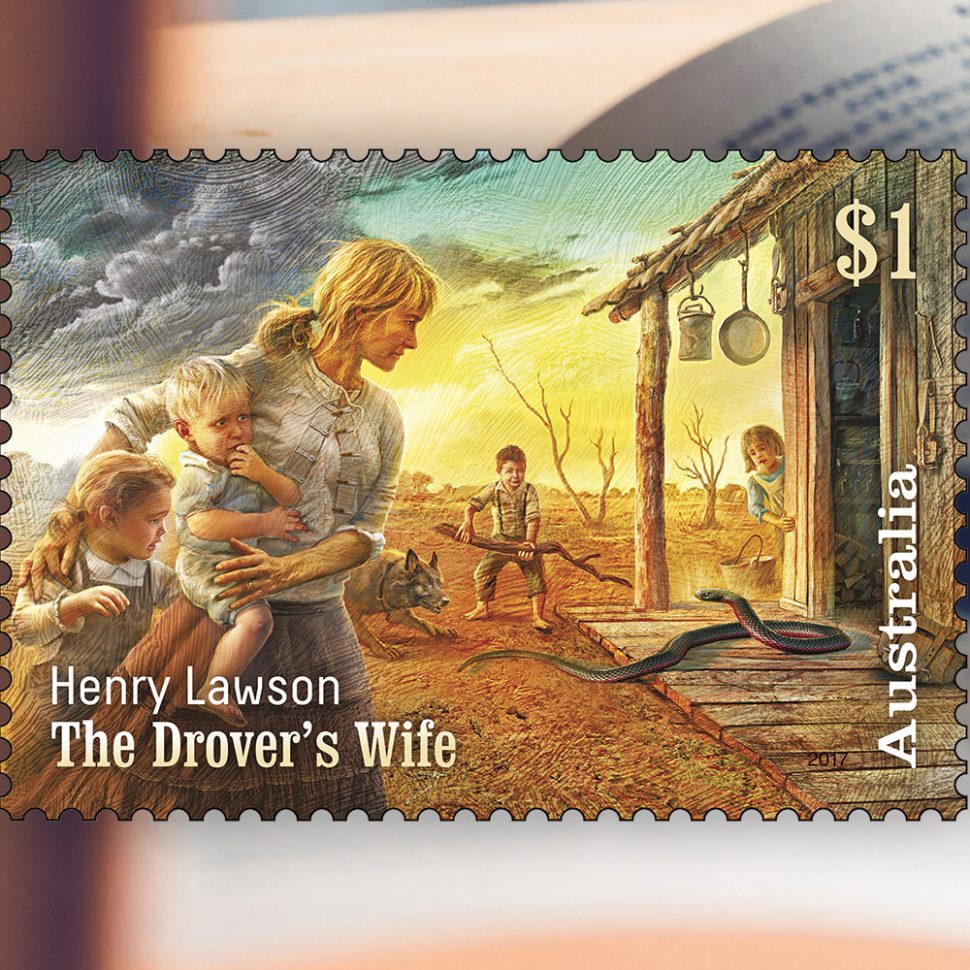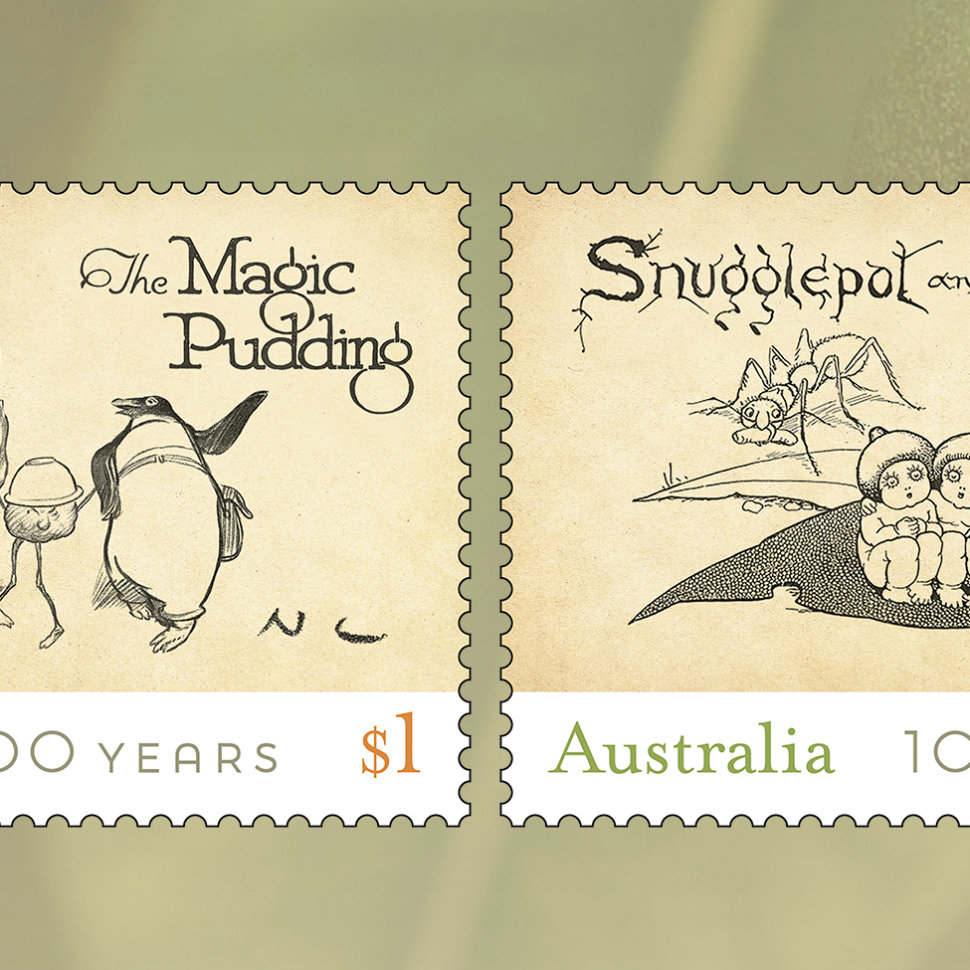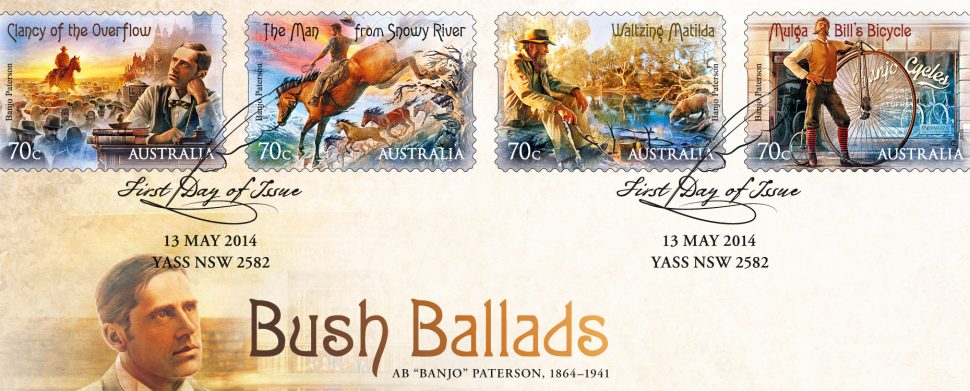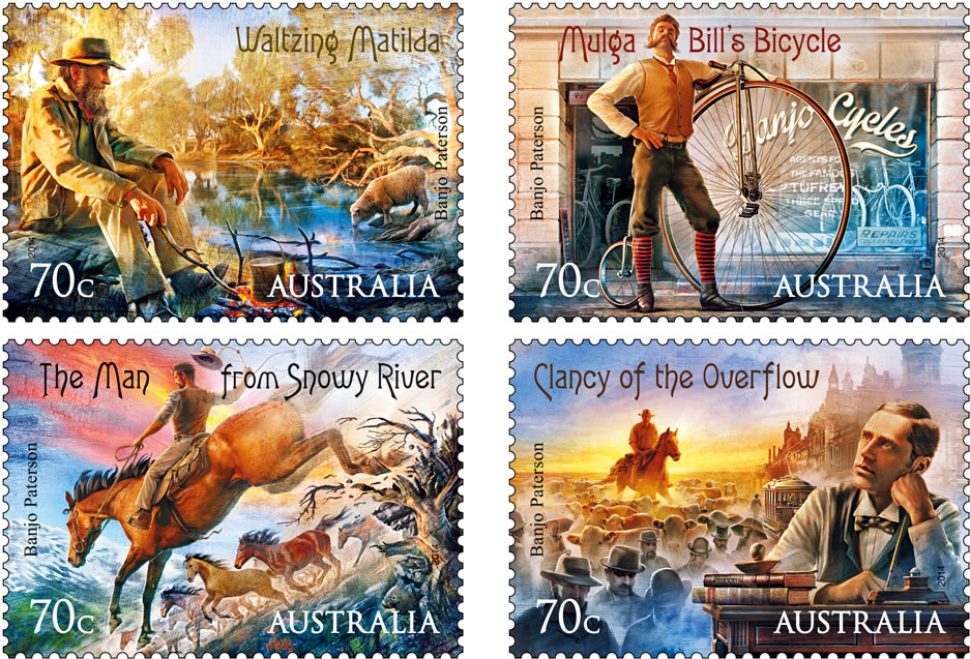Australia Post has been awarded first prize in the “World’s Best Offset Stamp” category in Spain’s NexoFil Awards for Best World Stamps of 2014, with its Bush Ballads: 150th Anniversary of the Birth of Banjo Paterson stamp issue.
The NexoFil (stamps) and NexoNum (coins) awards were presented at the Real Casa de la Moneda museum in Madrid on Friday, 6 November. The judging was by an international panel, which included Sydney philatelist, Geoffrey Lewis.
The winning stamp issue, released in 2014, commemorated the 150th anniversary of the birth of Australian literary great, Andrew Barton “Banjo” Paterson, acknowledging Banjo’s iconic bush-themed ballads.
The bush ballad is a thread of Australia’s early literary and popular culture, a rhyming, narrative-based poem adapted for singing. Bush ballads arose from everyday rhymesters setting their words to folk tunes. The form was likely brought to Australia by Irish and English migrants, whose home countries had had versions of the verse tradition for centuries.
Bush ballads were thought to be an authentic expression of Australian rural identity, though some also claim that Aboriginal content, where that occurs, is the only unique aspect of Australian ballads. Yet certainly balladists shaped their poems to an Australian setting and cultural context.
Australia Post Philatelic Manager, Michael Zsolt said the Bush Ballads domestic, base-rate (70c) stamp release, featuring four of Banjo’s iconic and well-loved ballads, was a nod to Australia’s idyllic past.
“The Australian bush ballad helped create a mythology of Australia and Australian identity during the late 19th and early 20th centuries and are generally simple stories of swagmen, bushrangers, drovers, shearers, working-class oppression and rural isolation,” Mr Zsolt said.
“Banjo Paterson is also one of Australia’s best known folk poets, and popular renditions of his works – such as the film of “The Man from Snowy River” and the use of “Waltzing Matilda” as an unofficial national anthem – have helped carry his ballads across time.
As a 10 year old, Banjo and his cousin Jack were sent to Sydney Grammar, living with their maternal grandmother, Emily Mary Barton, during the term and returning to “Illalong” in the holidays. Paterson then trained in law, serving his articles of clerkship with Herbert Sawley before being admitted as a solicitor in 1886. His interest lay, however, not in law but in poetry and writing. His grandmother had been a strong influence on him in this respect, and his father also had had poems published in the Sydney Bulletin when it was first established in 1880.
It was in the Bulletin that “The Banjo” would make his mark, his first published verse, “El Madhi to the Australian Troops”, appearing here in 1885. He gained much acclaim early in his poetry writing career. Many of his ballads were popular when they were published in the Bulletin during the 1880s, and at the urging of its editor, JF Archibald, he approached Angus & Robertson to publish a collection of his works. Well received in Australia and the United Kingdom, The Man from Snowy River and Other Verses (1895) sold out within a week, apparently beating the Australian record in publishing, and leading to further print runs. The title poem was significant in the formation and circulation of a particular Australian archetype, and while it may not be particularly relevant to contemporary Australians, this romantic figure of the bush retains a significant place in popular historical consciousness.
It was after the publication of this collection that Paterson came out from behind his pseudonym. “The Banjo” had been adopted early in his writing days, and was not for the musical instrument but for a station racehorse owned by his family. The connection was fitting for a man who had such a close affinity with horses. They are central to many of his poems, and his equine affinity is evident in his association with horseracing and with his military service, during which he accompanied horses being shipped to Africa and also trained the horses.
As well as being an accomplished folk poet, Paterson was a journalist and news editor. He had sent dispatches home from the front in South Africa for Fairfax during the Boer War in 1899–1900, and from China during the Boxer Rebellion in 1901. His reportage was recognised internationally through his being appointed a correspondent for Reuters. Although his application to report from France during the Great War was rejected, he served in that war in the Middle East. AB “Banjo” Paterson was appointed a Commander of the British Empire in 1939.
“We are proud to have been awarded first prize in the “World’s Best Offset Stamp” category,” Mr Zsolt said. “We trust this stamp issue will remind all Australians of Banjo Paterson’s important contribution to early Australian literature,” he said.
The Bush Ballads stamp release, illustrated by Sydney-based illustrators Jamie and Leanne Tufrey, feature the following Banjo Paterson poetry works:
- Clancy of the Overflow – This well-known poem, published in the Bulletin in December 1889, demonstrates Paterson’s romanticism for bush life.
- The Man from Snowy River – Published in the Bulletin in April 1890, this much-loved tale tells of the pursuit of a prizewinning colt that escaped to run among a herd of brumbies in mountainous country.
- Waltzing Matilda – Written in 1895 to a tune played by Christina Macpherson, this is probably the most famous of all Australian ballads.
- Mulga Bill’s Bicycle – Published in the Sydney Morning Herald in July 1896, this humorous poem was written at the height of the late 19th century bicycling craze.
This article was produced at the time of publication and will not be updated.
You might also like






